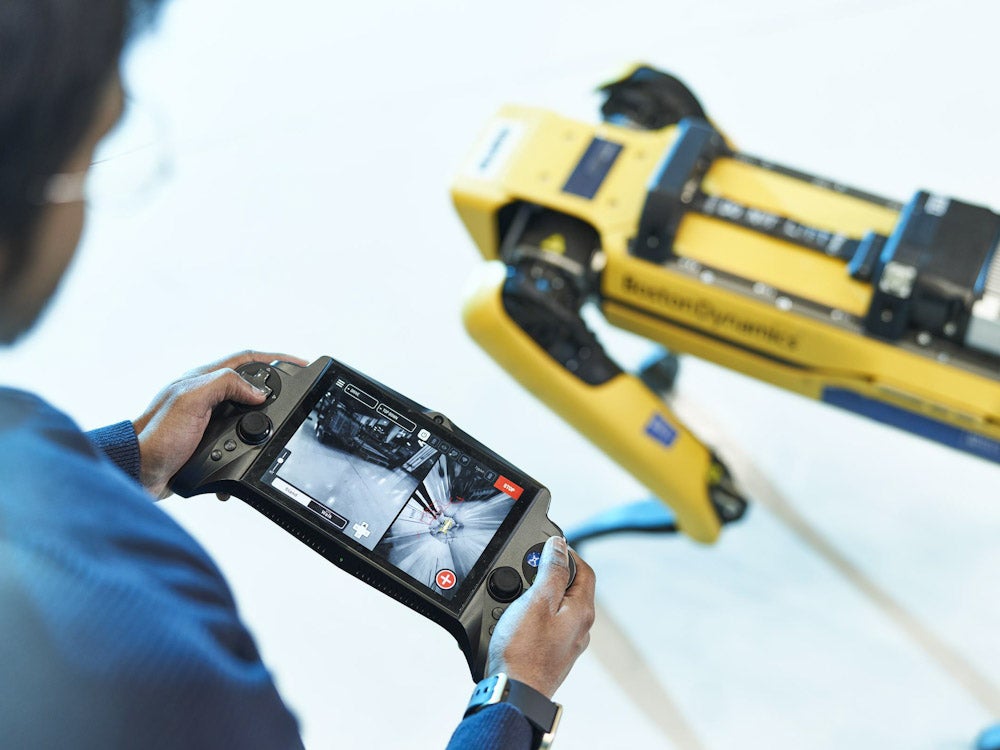
Actions are being taken to address the gaps in digital skills in Scotland while also harnessing the domestic industrial expertise available amid the impending prevalence of AI and robotics.
Skills Development Scotland (SDS) is the national skills body developing initiatives to equip more people with the capabilities they need for Industry 5.0, working closely with schools, colleges and universities. Alongside this, SDS administers Scottish apprenticeships and digital training programmes for even the most seasoned of industry professionals – such as veterans of the North Sea energy industry.

“Every industry has some digital requirement. What we are seeing is a lot of industries changing,” says Claire Gillespie, digital technologies sector skills manager for Scotland at SDS. “If you look at the energy sector, for example, with the whole transition to clean energy, we are seeing a huge demand for data skills and AI comes into that.”
SDS was originally heavily focused on the tech sector. However, the organisation has since expanded to potentially cover the digital skills needs of all industries given how vital these capabilities are becoming. The organisation works across Scotland with industries and businesses, as well as offering one-on-one support for workers.
“Lots of industries are going through a massive transition. They are having to reskill existing staff and think about how to take those existing colleagues with all that fantastic knowledge with them,” adds Gillespie.
Identifying Scottish digital skills requirements
On the precipice of a transformative decade for industries, there remains uncertainty about exactly what types of digital skills are required. For example, awareness is growing among businesses about the dramatic difference AI could make. However, the exact applications are not yet fully understood. Furthermore, a skilled workforce will remain of vital importance in many industries, with an added technical element.
“There is a big cluster of aerospace companies down in Ayrshire. Some of those are just introducing AI and trying to understand it, but they don’t know [how it will be used],” adds Alastair Gillen, growth and inward investment manager at SDS. “They know there is going to be a gap in their existing workforce because all the processes they currently have are developing all the time.
“Some of the old-school engineering processes will always be there and remain the bedrock of everything that they do – but there are going to be a lot of changes.”
SDS uses a skills planning model to understand the demands of employers, how that relates to regional and sectoral investment plans, and ways to train and connect potential employees with job vacancies. Rather than providing solely digital skills, it is more about the needs of specific industries on top of existing expertise.
“We help companies identify and diagnose where the gaps are, then guide them to the delivery of training or whatever may be needed,” adds Gillen. “We will do the diagnostic but then we will bring in the experts that can provide the necessary support.”
A digital skills action plan
A central pillar of the work of SDS is set out in the report, Digital Economy Skills Action Plan 2023–2028 – Key Issues and Priority Actions. To provide clarity about what is required, SDS has proposed definitions of the types of digital skills required. These range from basic requirements and integration within existing roles to highly specialist areas such as cybersecurity and software engineering.
“Digital skills aren’t just for digital tech sectors, it touches and impacts all of the key sectors that have a significant economic impact,” explains Vicki MacLean, growth and inward investment manager at SDS. “We understand what we need now – but importantly, what we need to develop for the future.”
To stay ahead of the curve for digital skills in Scotland, there is the Digital Economy Skills Group. It consists of leaders from the public and private sectors to identify where the skills gaps are or could appear in future. At a meeting in November, the topic of climate tech was discussed. While the sector is still in the relatively early stages, experts in Scotland are already figuring out where both skills gaps and opportunities may arise.
“We rely heavily on our evidence base to gather insight and build a picture for investors coming into Scotland about what talent looks like,” adds MacLean. “Also, there is the availability of talent coming down the track which could be, for example, from colleges, universities, people changing jobs or those retiring.”
Along with organisations such as the Data Lab, SDS is also working to improve digital inclusion throughout Scotland. Traditionally, tech has been a male-dominated sector. Yet in a sign of progress, women hold approximately 30% of national tech jobs in Scotland.

The rise of the robot workforce in Scotland
In the future workforce, robots are predicted to play a much larger role – notably for the more intensive, repetitive or dangerous tasks. Furthermore, against the backdrop of a global worker shortage, robots could help to fill gaps.
Logistics and heavy manufacturing, particularly in aerospace, are already using robotics in Scotland. As technology evolves, the uses are likely to increase further.
The National Robotarium at Herriot-Watt University in Edinburgh is making much progress in developing advanced tech. It is the UK’s centre for robotics and AI and only opened in late 2022 but is already addressing considerable demand across multiple industries.
National Robotarium CEO Stewart Miller believes that significant changes are set to arrive from robotics, predicting that workplaces and homes could look radically different within the next decade.
“There is a change coming. That is going to see a different generation of robotics, which can move around autonomously and make decisions. Whether that is drones, wheeled vehicles or legged robots,” says Miller. “They are going to be used in lots of different settings.”
Trials are taking place with robots to support healthcare staff. Advanced machines are also providing some cleaning and porter duties in hospitals and hotels.
However, Miller suggests that the biggest interest is in the strenuous roles in construction and agriculture, with related projects under way at the Robotarium.
In addition, there is a growing demand in the offshore wind sector for robots. Projects in the ScotWind and INTOG leasing rounds could see 29.6GW of new wind generation capacity added to Scottish waters if all developments progress as planned. Robots could soon fulfil roles in manufacturing turbines, as well as inspection and maintenance of offshore assets.
Alongside this, Miller is expecting domestic settings to see significant uses of robotics. With robotic lawnmowers already available commercially available, floor cleaning, vacuuming and window cleaning could soon be common uses of robotics.
“[We are set for] massive growth and that is really why the National Robotarium is here – to try and capitalise on that,” adds Miller.
Striking the right balance between the human and robot workforce
There is a desire in Scotland to strike the right balance to ensure that advanced tech does not dominate industries at the expense of the human workforce. To address this, SDS has been working with the National Robotarium to devise strategies.
While robots will fulfil a growing number of duties, their introduction can also create jobs. Human workers will likely be needed to fix any issues with robots, providing similar call-out services to electricians or plumbers. To build the future workforce, the Robotarium has an outreach team visiting industries to discuss demand, as well as schools to educate the next generation about future careers. Miller expects more robotics training programmes to run soon.
In addition, the Robotarium is heavily involved in projects studying interactions between humans and robots, covering everything from voice recognition to ethics.
Along with operating in different languages, another important project concerns how robots respond to more nuanced social cues from humans such as tone of voice, facial expressions and gestures. As these can vary in cultures around the world, this represents further opportunities for a domestic workforce that will likely have a far better understanding of local customs than global manufacturers.
A supportive network for robotics development
Scotland has many strengths in the digital skills and expertise required for robotics and AI. Most Scottish universities are running robotics courses, and nine colleges around Scotland have robotic workshops where businesses can learn more.
As with any new type of technology, the legislation can take some time to catch up. One of the advantages of being based in Scotland for robotics is the ability to contribute to policy development, which can move faster into law than in other parts of the world.
“It is the academic network, it is the further education network,” adds Miller. “It is the network of centres like the National Robotarium. Then there is the support, agility and speed of government decision-making.”
There are many challenges ahead for the future workforce and the role of robotics. The range of initiatives and expertise available in Scotland are placing the country in a strong position to become a leading international hub for robotics, backed up by a skilled workforce.
“The Scottish have that heritage of engineering and technology – and also, not being reticent to get your hands dirty and get on with it,” adds Miller. “These are things that stand us really well for the future.”
To learn more about what Scotland can offer tech firms, download the document below.



